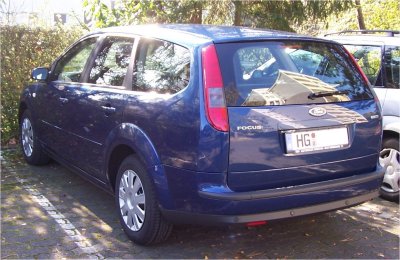The bio-ethanol car that I ordered in August has arrived and I collected it this morning.
On first impression it is a normal Ford Focus, but with one critical difference – it has a power socket at the front to heat up the ethanol in scandanavian countries.
Currently it has a full tank of E85 bio-ethanol fuel and I’ve been driving with it this afternoon both through the town and on the motorway – appart from the initial smell of the ethanol there is no apparent difference in the way it drives.
In the next few weeks I shall be trying out the new petrol station and seeing how the ethanol reacts to the cold temperatures, even mixing it with normal Super (95 Octane) petrol.

